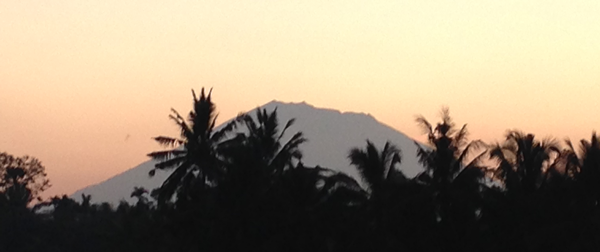We have been in Ubud, Bali for 10-days but you quickly lose count of what day it is our how long you’ve been here once you let go and get immersed in the pace and energy that is “Ubud”. The travel journals will say that Ubud is the “art and cultural” center of Bali. I would have to agree that the culture here is intoxicating. What surprised me personally is how long it took me to immerse myself in it. I had a much harder time letting go of the stress I brought from home than I thought. But a handful of massages from Soni at Juuk Manis Reflexology and a couple of Vinyasa Flow classes at the Yoga Barn, and my attitude adjustment finally kicked in.

Other than the Gili’s, as of this writing I haven’t spent much time anywhere else in Bali. Next week we are going to Sanur and Seminyak. But for now we are immersing ourselves in the food, massage, yoga and spirit that is Ubud. Ubud has a wide array of restaurants, cafes and warungs (small family-owned shops). I love the Balinese food with its variety of spices, rice, noodles and choice of protein.

Nancy and my daughter took a Balinese cooking class at Bumbu Bali that included a trip to an authentic Ubud market. They both came back to the villa with a cookbook that included a number of Balinese recipes so we can enjoy these dishes at home. There are numerous Asian, Mediterranean, Italian, French and American style eating establishments as well. We enjoyed Terrazzo, a small bistro very close to our villa where we found Mojitos along with both Balinese and contemporary Italian-influenced dishes. Last night we enjoyed pumpkin stuffed raviolis, carpaccio and fresh seared Ahi tuna with a pesto spread on top. The Ahi tuna was $9.00 which was about 1/2 to 1/3 of what it would have been at an upscale restaurant in the States.

On the flipside, wine and liquor is expensive by American standards so be prepared to pay a premium. The local beer, Bintang, has a monopoly in Bali and is two-thirds the price of imported beers. Nancy took a liking to San Miguel Light which on average costs about $2.50 per bottle.
While Ubud exudes “peace”, the streets are far from “peaceful”. You have to get off of the main road (Jalan Raya) and make your way to the gardens, jungles and numerous walks through rice paddy fields to enjoy all the beauty that Bali has to offer. We chose a villa that is inaccessible by car. The only way to get to the villa is on foot or by a motorbike. So while we were within a 15-minute walk from the busy “Main Road” and Monkey Forest Road where most of the shops and cafes are located, we were removed from all of the noise and commotion of the traffic and tourists.

Our villa is situated in a rice paddy called Juwuk Manis which is Balinese for “Sweet Orange”. It is during these walks through the rice paddy that you can discover the peace and tranquility that the interior of Bali is known for. Ubud is laid out in such a way that rice paddies are incorporated and preserved in the midst of urbanization. There seems to be a conscious effort to preserve green space. This is likely due to the fact that foreigners cannot own land in Bali and much of the land is owned by Balinese farmers. Foreigners typically lease plots of land on a 30-year term and build villas, resorts, etc. Foreigners can buy land through an intermediary but they can not legally hold the title to the land. In these cases the purchaser will often do a 60-year lease just in case the government decides to can the whole concept of intermediary ownership.

You hear the constant banter of roosters, birds, and ducks feeding on rice in the fields along with strategically placed wind chimes and the occasional motorbike passing by our villa. The rice paddies are active and they are worked daily (sunup to sundown) by rice farmers. Rice farmers create small huts where they store supplies and use as a retreat from the sun. They will often stay in these huts overnight. In the midst of the active rice paddies, new villas are being built as well. Developers typically select builders and laborers from nearby Java because of their work ethic. The Java workers will also build huts that they will live in until the construction project is completed.

There are a number of posts on the process of cultivating rice in Bali, so I won’t get into the details here but basically rice is harvested four times per year if its hybrid rice and twice per year if its organic. The primary reason for growing rice in Bali is to feed the Balinese people. The rice is only sold on the open market if there is a surplus. But as an engineer, I am fascinated by the hand carved aqueducts and irrigation system used to flow and then drain the fields. Once the rice is harvested ducks are used to eat the last bit of rice in the field. Then the fields are tilled, new rice is planted and then the flooding process begins. We were told that most of the water comes from a single source, the deep cratered Lake Batur which lies in between Mount Batur and Mount Agung. The water flows over 50km from this lake into the aqueduct system throughout Ubud.

